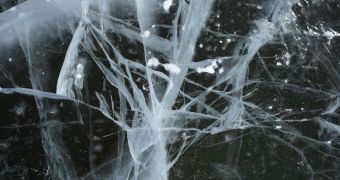A team of Australian scientists from the University of Melbourne proposes a new explanation for how the Universe appeared during the Big Bang. They say that the Cosmos is the result of a phase change.
This phenomenon occurs when a substance is changing states, going from liquid to solid, from solid to gas, or from gas to liquid, and vice-versa. One of these processes is now believed to have occurred before the Big Bang.
Standard cosmological models suggest that the Universe formed from a single, extremely dense bundle of energy, which burst open during the Big Bang, and then began a rapid process of expanding and cooling. According to theory, this is still happening today.
What the new idea proposes is that a formless, amorphous Universe existed before the Big Bang. What occurred to set things in motion was a sudden phase change. If the previous Cosmos was a liquid such as water, then the process would have turned it into ice.
Another difference between the new model and the previous one is that, while the latter suggests only three dimensions developed as a result of expansion, the former argues that four such dimensions were formed at the Big Bang (length, width, depth and time), Space reports.
Team leader James Quach, the author of a new paper detailing the research, says that the theory he and his team put forth can be tested by looking for defects in the structure of cosmic spacetime. When a material crystallizes (changes state), defects occur most of the times.
“Think of the early Universe as being like a liquid. Then as the Universe cools, it 'crystallizes' into the three spatial and one time dimension that we see today,” the astronomer says in a statement.
“Theorized this way, as the Universe cools, we would expect that cracks should form, similar to the way cracks are formed when water freezes into ice,” he goes on to say, adding that existing telescopes should theoretically be able to discover such cracks.
Over the past few years, several research teams have begun challenging the notion that spacetime is smooth and continuous. Some researchers believe it is made up of tiny building blocks, which are too small to observe directly.
These building blocks could be compared to atoms that make up matter. While most things look continuous to us from the outside, we now know that they're in fact made up of trillions upon trillions of individual units called atoms.
The main implication of this proposal is that the 4D geometry of spacetime is not fundamental to the Universe, but rather a lattice that emerged as soon as the phase change occurred. Interestingly enough, the mathematical background behind this proposal is extremely solid.
The work is published in the August issue of the scientific journal Physics Review D.

 14 DAY TRIAL //
14 DAY TRIAL //